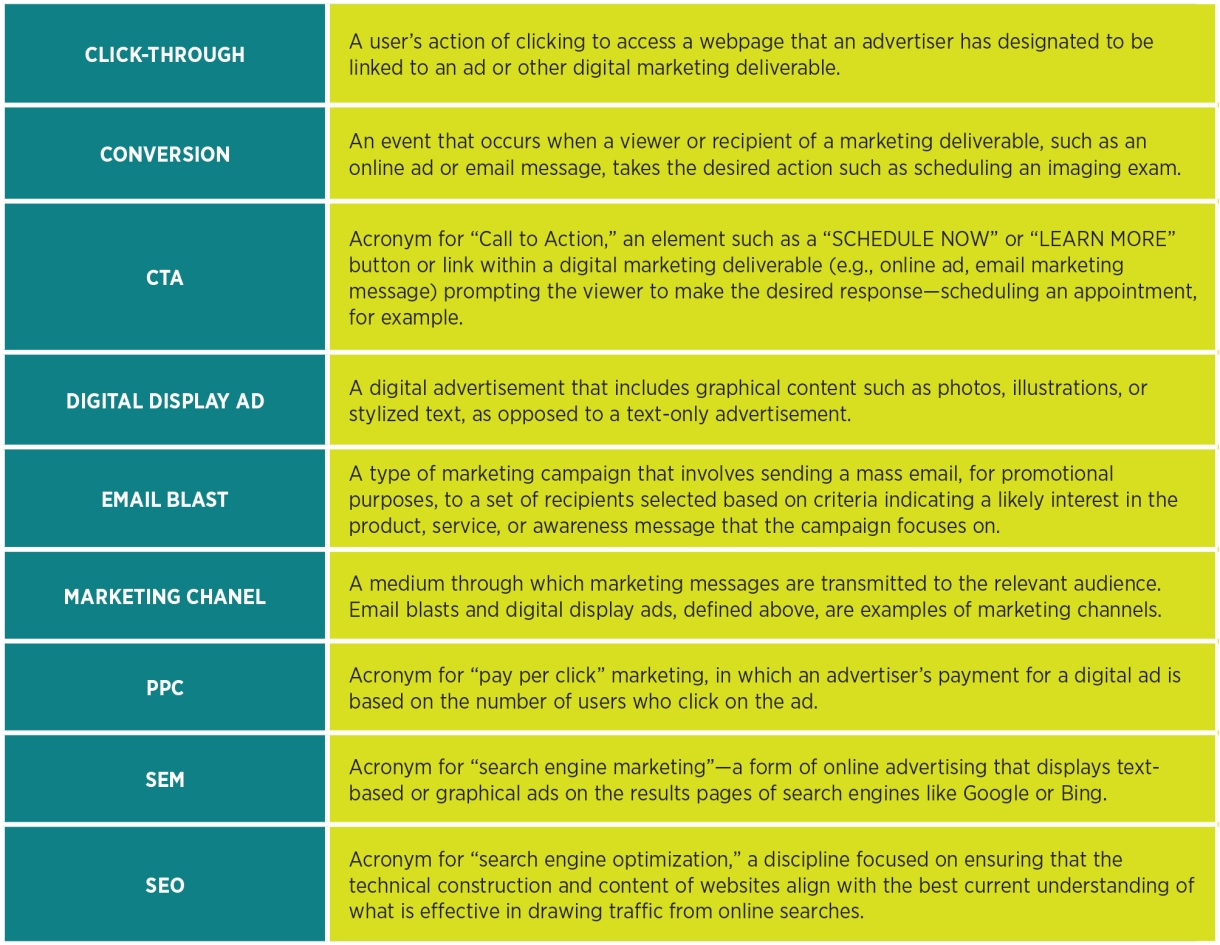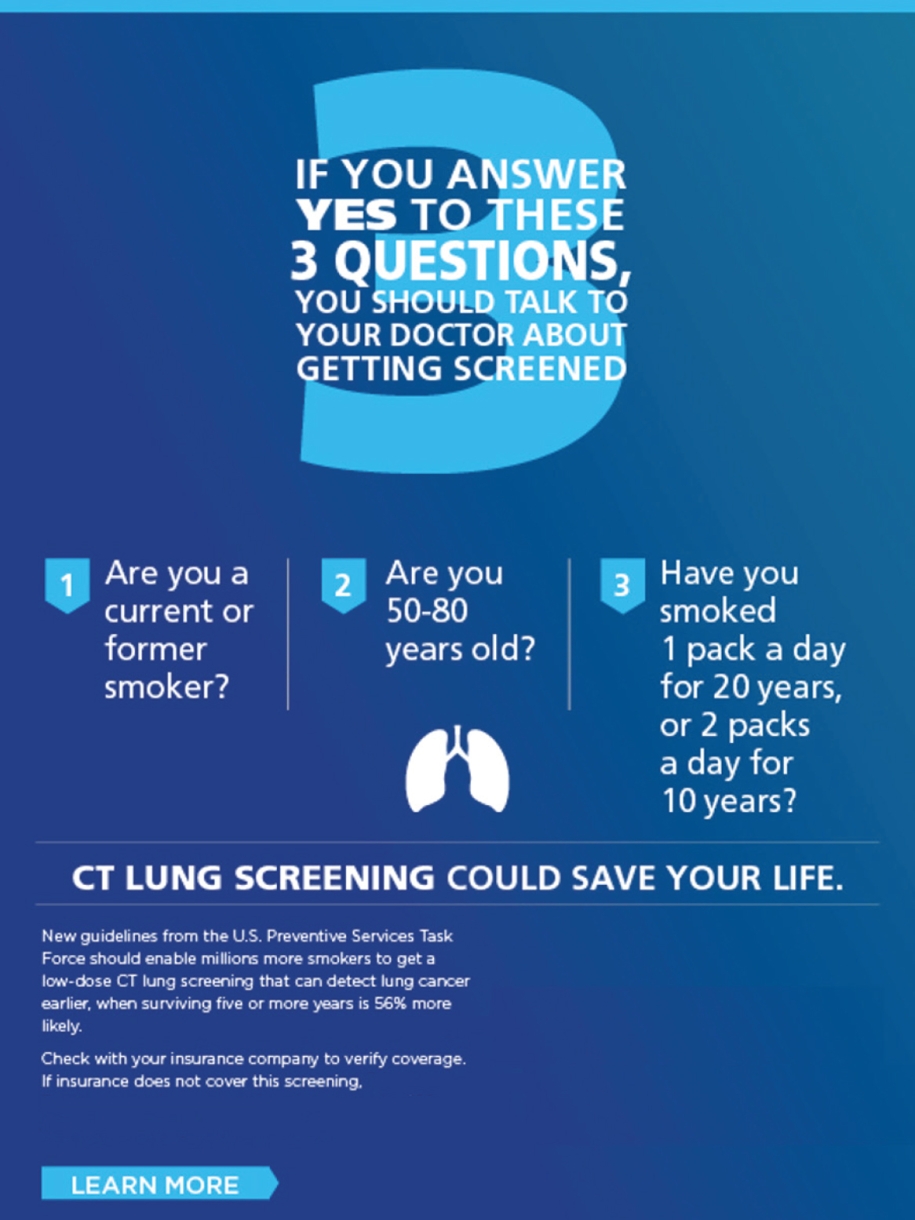Retailers, Real Estate, Automotive, and Travel & Tourism Have Harnessed the Digital Dollar-Driving Power. Now is Our Industry’s Time to Catch the Wave!
Let’s face it: historically, radiology has lagged a bit in adopting “new” marketing channels. Heck, some research indicates that radiology practice marketing only began to surface in the 1980s (Marasco & Linton, 1989), with brave practices that “dared to market” sometimes labeled as unethical, unprofessional, or worse. Today’s climate, with marketing widely embraced, is dramatically different, reflecting modern perceptions of healthcare marketing that evolved over decades. And as competition continues to stiffen, cost of doing business increases, and reimbursements decrease, conditions we face force us to look for new—or not so new—strategies and tactics to drive awareness and volume. In our tech-saturated era, entering the digital domain may look like a no-brainer for practices still lacking a robust online presence. Strong precedent now backs that up as a smart move: what we today call “digital marketing” has existed for nearly 30 years, since the 1994 debut of first banner ad on a major commercial website (LaFrance, 2021). After three decades of sustained development, it is virtually undeniable that digital, which for more than five years has surpassed annual television advertising expenditures (Slefo, 2017), is now not only a mature marketing channel but the major marketing medium. However, for groups not yet digitally immersed, anxieties about uncharted territory and where to begin can be obstacles. So, let’s dive into radiology’s opportunity to harness the digital marketing tsunami! Let’s work to turn FOTU (fear of the unknown) to FOMO (fear of missing out) in 2,500 words or less. Starting with the nine steps below can get you a strong step ahead.
1. Don’t be intimidated by the lingo.
As you explore the digital domain, you may notice an unfamiliar salad of acronyms and jargon. Table 1 is a short glossary to help you get the hang of some of the most common vocabulary. This glossary just scratches the surface. To explore further, online references, such as glossaries from The Motley Fool or Accutics.
2. Begin with goals.
Stating that business activities must be goal-directed may seem worthy of “Captain Obvious.” Yet, frequently, radiology marketing has not so businesslike motivations, such as choosing events to sponsor based on preferences of individual radiologists, without considering whether the exposure truly advances a business agenda. A goal need not sound lofty: it may seem almost elementary, like “increase revenue by five percent this year”—an excellent high-level goal. However, goals with clear specificity and measurability are more readily attainable, with successes vs. shortfalls easier to distinguish. Accordingly, consider goals that, while they roll-up to a general outcome, are narrower, such as:
- Increase mammography volume 10 percent.
- Boost reimbursements by growing the commercial share of payor mix four percentage points.
- Launch a CT lung screening program with the help of a digital marketing campaign driving at least 500 online appointment requests.
For rookie forays into digital, consider starting with only one goal of similar measurability to those above. Learnings could then be incorporated into support for additional goals.
3. Evaluate alignment of any existing digital efforts with current goals.
Even if a practice lacks a full-fledged digital marketing program, some form of digital presence probably exists already. Consider a group with a single-page website and a Facebook page that has not been updated for over two years. They are engaged in digital marketing—just not doing it very well. This passive approach with neglected assets is almost certainly failing to produce significant business results. Hopefully, your practice is further along. Depending on your current mix of channels, your evaluation could consist of answering questions like these:
- “How many visitors to any page on our website ended up completing an appointment request?”
- “How many Facebook-page visitors followed links from our posts to related pages on our website?”
- “Of everyone exposed to our women’s imaging ads during Google searches, how many clicked?”
The answers will help you understand the effectiveness of current activities and choose additional efforts to improve results.
4. Identify audiences.
Generations before today’s digital environment was even imaginable, marketers understood the key success ingredients: reaching the right audience with the right message in the right place at the right time. This is what marketers mean by “targeting.” However, digital contributes orders-of-magnitude greater targeting precision. An easy way to understand audience definition for digital campaigns is to start with the three sample goals above:
- For a women’s imaging campaign, you obviously want to reach women age 40+, in a geography convenient to your centers.
- To support payor mix optimization, you could target people in your catchment area who work for large employers that provide excellent health insurance.
- For a CT lung screening launch, target:
- People in your region who meet endorsed age and smoking-history criteria.
- Area primary-care physicians, to keep the benefits of CT lung cancer screening top-of-mind.
Virtually all digital channels can support these targeting needs. Here are just a few examples:
- Women of appropriate age and geography can be selected for social media advertising or boosted posts, as well as keyword-driven advertisements on search engines or display ads on popular websites.
- Employees of specific organizations are accessible through means such as (1) geolocation, which can infer employment settings based on location data collected from mobile devices, or (2) leveraging employment data that users voluntarily disclose online. Figure 1 is an example of an ad using employer-based targeting.
- Probable smokers are targetable through data on purchase history or online behavior, which can be applied in channels such as email blasts or digital ads (see Figure 2).
- Primary care physicians and specialists can also be targeted through various data sources. Primary care physicians and specialists can also be targeted through various data sources.
5. Formulate strategies.
Digital marketing strategies consist primarily of a mix of audience and message—variables that, although not unique to the digital domain, can be applied there with powerful effectiveness. Drawing on the same sample goals, consider the following strategy statements:
- Persuade women to view our centers as the best choice for mammograms by emphasizing exceptional convenience, women-friendly facilities, and outstanding patient experience.
- Build awareness among employees of large organizations that we accept their insurance and offer a seamless, convenient, low-stress experience.
- Motivate lung screening candidates with emotionally evocative appeals, such as a life with fewer uncertainties about lung health or the potential for more time with loved ones after early detection and treatment.
6. Choose tactics aligned with audiences, strategies, and budget.
Your mix will be a selection of digital channels—like email blasts or digital ads—that suit your goals, audiences, and strategies. A related yet easily overlooked component is landing pages, which can make all of these tactics more effective. A landing page is a webpage on your site specifically crafted to expand on campaign messages, encourage the desired action, and provide an easy response mechanism. Since targeting capabilities are available in virtually all digital channels, your evaluation will seek channels with the best fit. For example, you may decide that email blasts fit your CT lung strategy due to factors such as targeted list availability or more copy space for emotional appeals. Your budget will be most influential at this step. If you have a strict marketing allocation, cost may be decisive, especially if two or more channels have an essentially equal strategic fit. Alternatively, you may have flexibility to budget campaign-by-campaign. There are many approaches to budget allocation, but one that fits a campaign-specific approach is based on percentage of desired revenue. Good benchmarks range from 10 to 20 percent of the revenue you hope to generate from a digital campaign (Denny, 2022). So, if your goal is to generate $200,000 in additional CT lung revenue screening over three months, consider a campaign cost between $20,000–40,000. This campaign-specific budget percentage may be higher than familiar benchmarks for overall healthcare marketing, but understand that it stems from ROI expectations that, for digital campaigns with direct revenue-generating response mechanisms, can often be 5X–10X. Not too shabby, especially compared to ROI ranges you may recall from traditional marketing. And it can get even better. As your team becomes digitally adept, much higher returns may lie ahead, as a case snapshot toward the end of this article demonstrates. For practices without a historical base of metrics, a wise approach would be to spread a digital budget over a small mix such as paid search, social media ads, and email blasts, and then possibly narrow the mix if strong performers emerge.
7. Don’t be a one- or two-trick pony—but also avoid over-extending
More of a caveat than a step, this concept relates closely to the channel-selection process. There are two extremes. On one end, a common issue in radiology is believing that a website and social media presence are the only channels needed. This minimal mix will probably be ineffective. Here are two reasons why:
- It is difficult for a small-to-midsize organization to develop a content-rich website that draws sufficient traffic to move the revenue needle without further digital support.
- A social media presence consisting, for example, of a spottily maintained Facebook page unsupported by paid amplification is unlikely to generate game-changing engagement.
That said, also avoid the opposite extreme. By attempting too many channels too soon, your organization could become a “jack of all digital trades” and a master of none, with disappointing results. Instead, start with small mix—for example, expand on your website and social media with email blasts, paid search, and paid social media ads, tested over a few campaigns. Learn what works for you and what does not, then do more what works. This will move you toward mastering a small mix and creating a solid base for expansion.
8. Measure, measure, measure.
The powerful measurement capabilities of digital marketing have been mentioned several times here, but this crucial concept bears repeating. Outcomes of traditional marketing tactics, especially those with primarily awareness goals, can be challenging to quantify. Digital marketing channels, however, are immensely measurable. As with many offline tactics, digital metrics often begin with a count of exposures—the number of times a deliverable like an ad has been presented to individual users. However, the measurement does not end there. Some digital channels can document milestones of a “customer journey” that, ideally, begins with an exposure and ends with a “sale.” Consider what these milestones might look like for digital ads promoting mammograms, displayed on a major news website in your market:
- A consumer visits the news website. An ad server scans captured data points about the user’s demographics, interests, and preferences, identifying the consumer as a female age 40+ and using a device located in your catchment area. The server then displays an ad spotlighting factors that distinguish your center as the premier women’s imaging choice. This event will be documented as an “impression,” with an impression count often being the first metric shown in a digital marketing report.
- If the consumer makes the desired response—a click or tap that leads to a landing page expanding further on ad messaging—the event is added to a count of “Click Throughs.”
- For a mammogram campaign, the next desired action is, of course, scheduling an appointment. This is what makes a landing page, which can contain or link to an appointment request form, so valuable when tied to a digital campaign. The tracking can document that the form was completed, submitted, and confirmed. At this point, a completed “sale”— also called a “conversion,” is documented. A count of conversions attributed to your campaign may be the final metric in your digital report.
9. Report, report, report.
Speaking of reports, an important step not to overlook is regularly presenting results to senior administrative and clinical leadership. Celebrating digital successes, demonstrating insights gained from identified shortcomings, and detailing planned corrective actions, is critical to maintaining confidence and support. Reporting makes financial and clinical benefits clear, cultivating a mindset that views marketing as an investment that boosts the bottom line. Figure 3 is an excerpt from a real-world digital campaign report. Note that it includes datapoints discussed above, including click-throughs, conversions, and appointments attributable to digital campaigns. It shows results from actual campaigns deployed in August 2022 by a practice that has succeeded impressively in digital. Results of digital marketing campaigns deployed by a radiology practice, showing appointment requests attributable to paid digital marketing tactics in a one-month period. Excerpted from Digital & Analytics Report, August 2022 (unpublished confidential document). Revenue estimates can make benefits clearer. Various monetization approaches are available, such as applying average billing, reimbursement, or collection rates. For example, using an average gross billing per exam with the above data, a value exceeding $500,000 could be calculated from 1,374 appointment requests. Since digital spend was $25,000 during the report month, the result can be expressed as an impressive ROI exceeding 20X. Granted, it took this practice several years to reach this digital success level. Although equivalent results cannot be guaranteed on every at-bat, this snapshot exemplifies what sustained digital marketing can achieve.
10. Rinse and repeat—consistently!
Remember that digital marketing remains, at the core, marketing. Digital media altered certain cost and accessibility and accessibility elements. That changed some of the rules, but not all of them—especially the most timeless marketing fundamentals. A common pitfall is not realizing that many success factors still align with those of classic general marketing. For example, more than a century of industry wisdom (e.g., Smith, 1902, p. 66) underlies the understanding that repeatedly exposing an audience to marketing messages is essential. Contemporary academic research (e.g., Schmidt & Eisend, 2015) demonstrates that this is just as true in today’s digitally intensive climate as it was in 1902.
“Okay, We Get It. Digital Marketing can Deliver Remarkable Results. But What Next?”
Chances are, if your practice currently lacks a sustained digital marketing program, you would love to replicate the above success snapshot. However, it is perfectly understandable that, for a group without digital marketing expertise in-house, deciding where to get started may seem intimidating. However, making good early decisions does not require staffing up with a full-time marketing team before you can begin. The advice above to begin with just a small mix of channels will prevent feeling overwhelmed or falling into the analysis-paralysis trap. Online content and various service providers to help newcomers get started are abundant:
- To better understand how to optimize websites for more traffic, MOZ.com and Yoast.com contain a wealth of information.
- Consider websites like Search Engine Land or Search Engine Journal for educational content from novice to advanced levels on search engine marketing or digital display.
- To begin navigating the email marketing waters, vendors such as Constant Contact and MailChimp offer not only platforms that make it easier to create and deploy email marketing campaigns, but also a wealth of how-to information.
- Media consultants of various stripes, as well as brokers of email lists and other marketing data, can bring a wide perspective to bear on targeting options to support your strategies.
Finally, consider the benefits of outside help from specialists in your industry. For example, consultants specialized in enhancing the success of medical practices of various sizes and business lifecycle stages can meet you where you are with guidance on starting a program aligned with your goals, budget, and internal resources.
Contact us to learn how we can help you!






